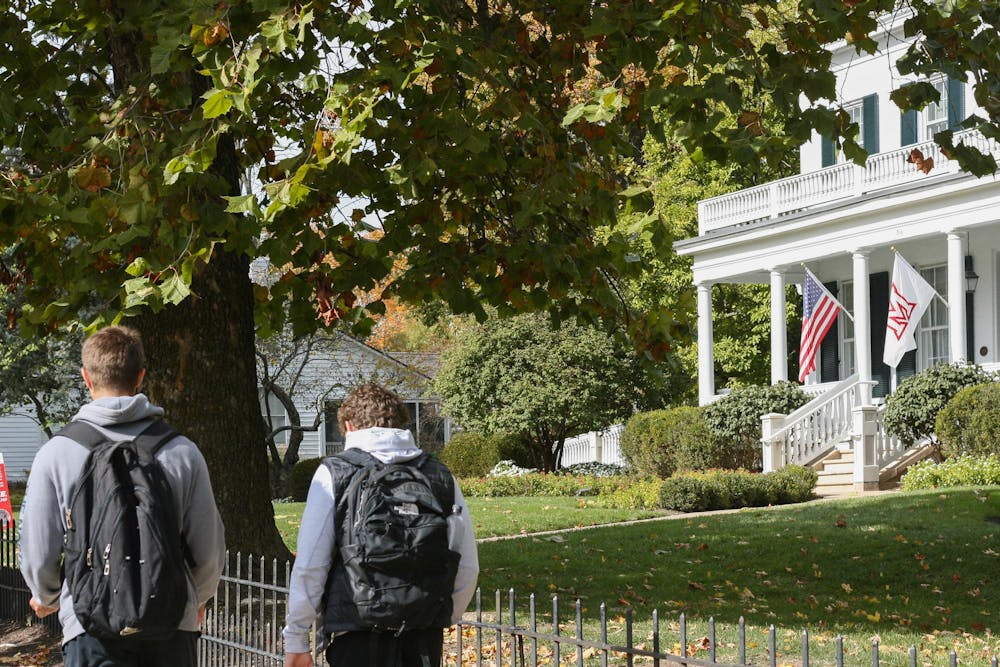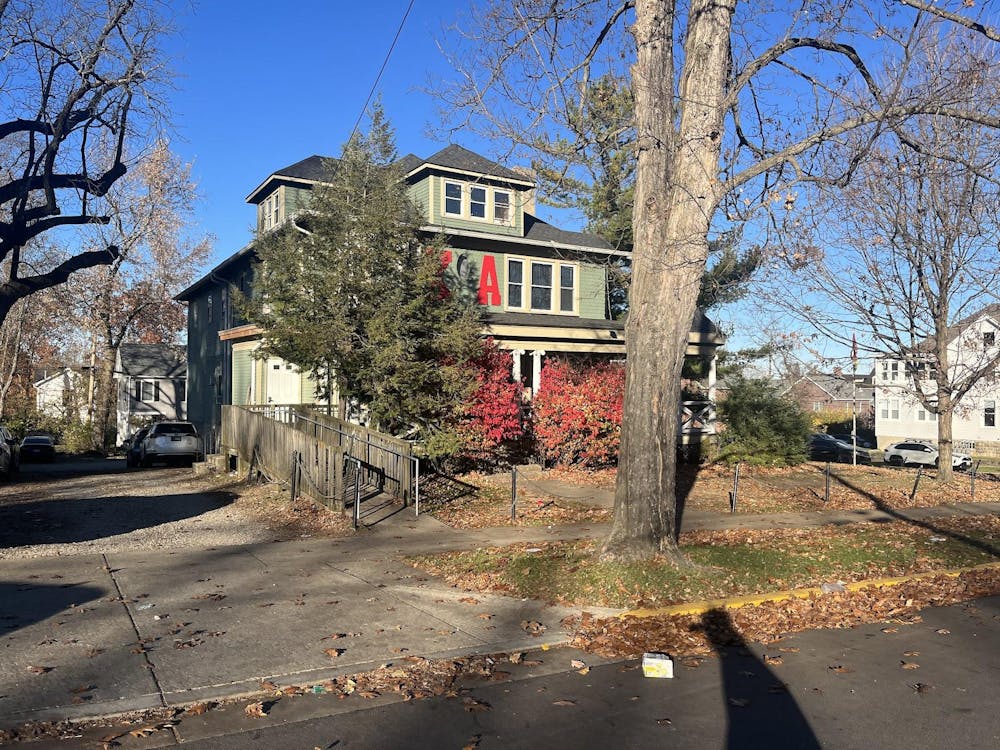Along High Street, a large white house sits across from Miami University’s front lawn. With its open-air porch, supported by tall white columns and black shutters framing every window, Lewis Place has become a campus staple and a symbol of the university’s history.
But most students don’t know much about Lewis Place, beyond the fact that President Gregory Crawford and his wife, Renate Crawford, live there with their three dogs: Charlie, Newton and Ivy. Yet, it has been the home of every Miami president for more than 100 years.
In 1839, two years after arriving in Oxford, Romeo Lewis, a Connecticut and Floridian businessman, built the house for his wife, Jane. The couple lived in the house together until 1843, when Romeo died at age 48. Jane resided in the house until she died in 1888, at 80 years old.
For years, many people have speculated that Jane was an abolition sympathizer and even made Lewis Place a stop on the Underground Railroad. In 1965, when renovations were underway in preparation for Miami President Phillip Shriver’s arrival, secret passages were found that could have hidden runaway slaves, according to the Smith Library of Regional History and Oxford’s Black History tour.
Since the Lewises had no children of their own, the home went to Romeo’s relative, Phillip Moore, who rented out the house to various people and eventually leased it to the university.
“[After some time], Moore just realized that they were not going to live in the home,” said Jacqueline Johnson, a university archivist and interim head of special collections and archives. “So, they offered it to the university as a lease for the university president.”
Enjoy what you're reading?
Signup for our newsletter
Following the lease in 1903, President Guy Potter Benton moved into Lewis Place, along with his wife and daughter. However, it wouldn’t be until 1929 that the university bought the residence for $25,000.
After President Benton resigned his position, President Raymond M. Hughes moved into the historic house, creating the expectation that Miami presidents would reside there. Since then, it has been assumed that the presidents would live in Lewis Place as part of their contract with the school.
“There is no requirement for the president to live [at Lewis Place], pay rent or host events,” said Seth Bauguess, senior director of communications at Miami.
The house is simply a bonus of being the university president.
“It’s a private residence,” Johnson said. “It’s just like your house. It's just that the president happens to live there.”
Each president has left their mark on Lewis Place, often giving it modern updates and adding personal touches, like new paint colors, decor and new furniture for the public areas of the house.
“Originally, Lewis Place had no bathrooms, running water, closets, electricity, cooling and was heated with 16 fireplaces,” said Alecia Lipton, director of media and public relations. “Over time, all of these conveniences were added to the house. The last major renovation of Lewis Place occurred about 20 years ago, between President [James] Garland’s and President [David] Hodge’s occupancy.”
For many years, much of the artwork on the first floor was on loan from the Richard and Carole Cocks Art Museum. Since moving into the house in 2016, the Crawfords have worked with the Museum as well as the College of Creative Arts to highlight the work of Miami students and faculty.
Along with featuring the Miami community’s art, the president and his wife host various events in Lewis Place, such as admissions receptions, dinners, recognition events, open houses as well as M.O.V.E Bootcamps, holiday parties, Welcome Weekend open house and more. These events welcome thousands of guests a year, including alumni, donors, students, parents and faculty.
Crawford occasionally holds meetings in his study, which was originally the bedroom of the house’s original owner, Jane Lewis. Renate Crawford holds office hours for her physics classes there, as well.
Manav Diler, a senior finance and business analytics major, said he likes knowing that the president lives just off campus.
“I think it’s a good thing,” Diler said. “It really makes a smaller community. I see him around campus playing catch with some of the frats and all those boot camps that we have at his house; It really takes down the [hierarchical idea] that ‘Oh, he’s the president, you have to be formal with him.’”




